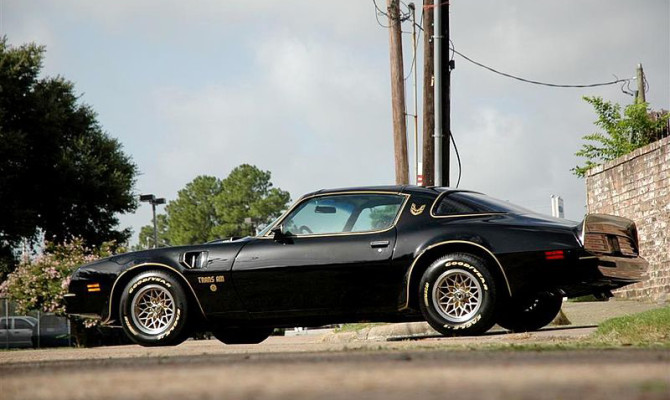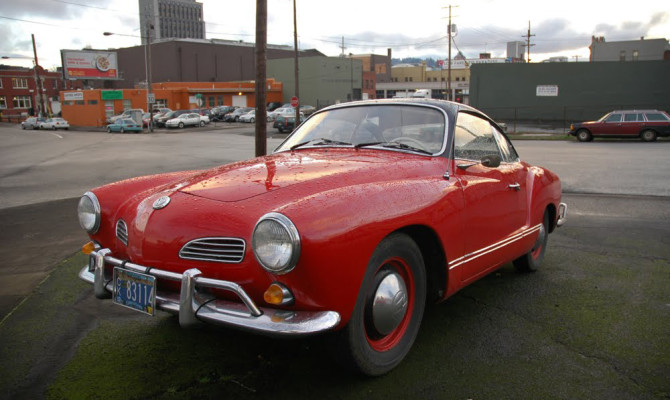“Perhaps the most destructive force has four teeth and a naked tail – rats and mice, the same rodents that wiped out half the population of Europe by carrying Bubonic plague, can really mess with your classic car.”
Contrary to general perception, most classic cars aren’t fragile flowers.
In fact, many are anvil-tough, particularly American cars of the 1950s and 1960s, built with real Pennsylvania steel and very little plastic. But even these rolling bank vaults can be seriously screwed up by these five things: (more…)
They don’t want the cars of their dad’s time. They want what was on their bedroom wall posters as kids…
Gen Xers are poised to inherit the classic car hobby.
The market for 1950s Americana is already starting to fall flat as the oldest boomers (now pushing 70) start to cash out.
Gen Xers (those born from 1965-85) are starting to gain some disposable income, and guess what? They don’t want the cars of their dad’s time. They want what was on their bedroom wall posters as kids. That places the cars built between 1976 and 1996 squarely in the cross hairs of impending serious collectability. The dirty secret?
In some cases, the Gen Xer cars are better. Here are five Boomer vs. Gen Xer comparos:
1964 Pontiac GTO vs. 1976 Pontiac Trans Am
According to John Kraman, the consignment director for Mecum Auctions, “Smoky and the Bandit”-era black and gold T/As are white-hot — easier to move than the granddaddy of muscle cars, the 1964 Pontiac GTO. Makes sense; this being the 50th anniversary year of the GTO, the guys who bought them new that first year are all septuagenarians. Bandit T/As on the other hand are revered by Gen Xers who grew up watching Burt Reynolds’ toupee blowing in the T-top slip stream, humming “East Bound and Down”. To them, it matters little that most malaise-era T/As– save for the 455-cubic-inch versions– were toothless tigers compared to the GTO. They’re cool and that’s enough.
1965 VW Karmann Ghia vs. 1992 Volkswagen Corrado VR6
The Karmann Ghia is an extremely pretty car, but at the end of the day, it’s a Beetle in an Italian suit. The Corrado, on the other hand, is like a Scirocco that’s paid a visit to BALCO — it’s totally juiced. With a delicious narrow angle V-6 and very little torque steer, it may be one of the most desirable front-drivers ever built. Only the motorized-mouse passive restraint seatbelts detract. Unlike Barry Bonds, the VR6 enhancement of the Corrado won’t keep it out of the Hall of Fame of collectible cars. Find a good one now (if you can).
1972 BMW 2002tii vs. 1988 BMW E30 M3
The BMW 2002 has deservedly acquired a big reputation as the seminal German sports sedan. The fuel-injected tii is nearly mythical. Fun cars, but they have non-existent ventilation and the phony wood dash appliqués are a bit chincy. In addition, the carbureted cars feel a bit anemic today and 2002 4-speeds are unpleasant on the highway. The E30 M3, on the other hand, is more high-strung than a thorobred race horse and it only gets better the harder you thrash it. An E30 M3 with just 40,000 miles sold at the Russo and Steele auction in Monterey last year for $40,000. It seemed like a ton of money at the time. A half a year later, it sounds like a screaming deal.
1970 Datsun 240Z vs. 1992 Mazda RX-7
The 240Z was a phenomenal car when it came out in 1969 at a price of just over $3,500. It was well-built, reliable and did everything well. It was the comet that killed the dinosaurs for the Opel GTs and Triumph GT6s of the world. In actuality, though, its performance envelope wasn’t that astonishing: 0-60 in about 8.7 seconds and around 125 mph. Not that much better than an Austin-Healey 3000 MK III. By contrast, the third-generation RX-7 offered supercar performance and looks at a bargain price, much as the Jaguar E-Type had in 1961. Most have been thoroughly thrashed and run into the ground (like most 240Zs had). The kicker is that far fewer RX-7s made it to the U.S. A good one at under $20K is a steal.
1965 Toyota Land Cruiser vs. 1984 Toyota 4Runner
We love the FJ40 Land Cruiser and, in truth, with its near 30-year production life, it spans both the boomer and Gen-X eras. Insanely over restored FJ40s are showing up at hoity-toity catalog auctions and bringing close to six figures. As a result, some of us are over the FJ40. Enter the first-generation Toyota 4Runner. Essentially just a Toyota Hilux pickup with a fiberglass shell, many came to the U.S. sans rear seats to skirt passenger-car import duties. There are probably fewer than 1,000 of these left with under 200,000 miles, no rust, and their original paint and tape stripes. We’ve already seen good ones break 20 grand.
Rob Sass is the vice-president of content for Hagerty Insurance. Hagerty is the world’s leading specialist provider of classic car and boat insurance. Learn more at hagerty.ca and you can email rsass [at] hagerty [dot] com
Looking into my automotive crystal ball, I see a number of reasonably priced Japanese cars with the potential to go up in value, not down.
And while you wait for their price to rise, these collector cars of the future should give you endless driving pleasure – that is, until you sell! (more…)
Recent Comments
- { Enjoyed your Forest of Bowland in the BMW X5M, particularly the photo of the BMW in front of the main part of Stonyhurst College where... }
- { Bantam designed the Jeep, not Willy's or Ford. The American military gave the original Bantam prototype to Willys and Ford to copy. There is plenty... }
- { All Escalades come with a 6.2-lilter V8 engine that produces 420 horsepower. A six-speed automatic is the only transmission offered and drives the rear wheels.... }
- { Alexandra is an excellent journalist. }
Popular Posts
- Journey to a ‘Sparkling’ Luxury Okanagan Resort “Four lucky readers will put a Dodge Journey’s weekend-...
- The Need For Speed: Hike Those Highway Limits More than half of those polled believe the province sho...
- Drives-U-Crazy… Erratic drivers. An early morning drive from Kelowna to Vancouver is nor...
- Readers Respond: The Pros and Cons of Increasing B.C. Speed Limits Increasing the speed limits will only increase risk to...
- Honda CR-V Review: The Compact Crossover To Get Things Done The CRV is a very stylish and aerodynamic crossover veh...












